Baja Wine Country
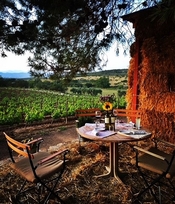 Yes, we are heading to Mexico for wine. The vast majority of Baja wineries are in Valle de Guadalupe, a mere 90-minute drive from the U.S. border. Mexico’s Valle de Guadalupe has been referred to as the "Napa Valley of Mexico," and for good reason. Blessed with a perfect climate, a centuries-old winemaking tradition, and surrounded by two seas, this region can yield world-class wines. The area is experiencing a rebirth with renewed interest in its potential due to stunning vistas, designer hotels, and impeccable Mexican cuisine.
Yes, we are heading to Mexico for wine. The vast majority of Baja wineries are in Valle de Guadalupe, a mere 90-minute drive from the U.S. border. Mexico’s Valle de Guadalupe has been referred to as the "Napa Valley of Mexico," and for good reason. Blessed with a perfect climate, a centuries-old winemaking tradition, and surrounded by two seas, this region can yield world-class wines. The area is experiencing a rebirth with renewed interest in its potential due to stunning vistas, designer hotels, and impeccable Mexican cuisine.–Bodegas Henri Lurton Sauvignon Blanc 2018, $27
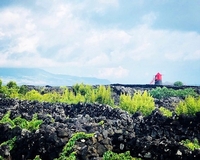 You may be familiar with wine regions in Portugal like the Douro and the Alentejo; however, wines from Pico Island may not yet be on your radar. Pico Island, one of nine volcanic Azorean islands in the Atlantic Ocean, is a short flight from mainland Portugal and produces wines well worth discovering. It may not be the first place you would expect to find a thriving wine culture; however, the destination has been producing wine since the 15th century. Protected by UNESCO World Heritage since 2004, Pico’s vineyards are planted on volcanic soils and surrounded by dry-stone walls made of black basalt stones. White wines are made primarily from Arinto grapes, along with Verdelho and Terrantez do Pico grapes, whereas red wines are made from Merlot, Syrah, and hybrids. Wine enthusiasts who are searching for a new experience should try these magnificent wines of the Azores.
You may be familiar with wine regions in Portugal like the Douro and the Alentejo; however, wines from Pico Island may not yet be on your radar. Pico Island, one of nine volcanic Azorean islands in the Atlantic Ocean, is a short flight from mainland Portugal and produces wines well worth discovering. It may not be the first place you would expect to find a thriving wine culture; however, the destination has been producing wine since the 15th century. Protected by UNESCO World Heritage since 2004, Pico’s vineyards are planted on volcanic soils and surrounded by dry-stone walls made of black basalt stones. White wines are made primarily from Arinto grapes, along with Verdelho and Terrantez do Pico grapes, whereas red wines are made from Merlot, Syrah, and hybrids. Wine enthusiasts who are searching for a new experience should try these magnificent wines of the Azores.–Azores Wine Company, Terrantez do Pico, 2019, $58
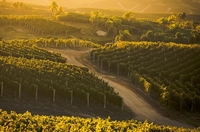 Argentina and Chile are probably the places you think of when discussing South American wines; however, neighboring Uruguay should not be ignored. Uruguay has a 150-year-long history of winemaking, but it’s always struggled to get the kind of attention that its neighbors have received. Granted, it’s much smaller than its neighbors but by no means less significant. Vines come planted across more than 20,000 acres, many of which benefit from their proximity to the Atlantic Ocean, and virtually all of Uruguay’s wineries are small, family-run businesses.
Argentina and Chile are probably the places you think of when discussing South American wines; however, neighboring Uruguay should not be ignored. Uruguay has a 150-year-long history of winemaking, but it’s always struggled to get the kind of attention that its neighbors have received. Granted, it’s much smaller than its neighbors but by no means less significant. Vines come planted across more than 20,000 acres, many of which benefit from their proximity to the Atlantic Ocean, and virtually all of Uruguay’s wineries are small, family-run businesses. Photo: Courtesy of Bodega Garzón
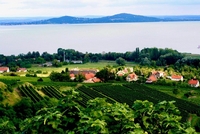 Like much of Europe, Hungary has a long history of wine production dating back to Roman times. More than 100 vineyards in Hungary are spread across twenty-two wine regions with different microclimates producing different styles and tastes. While Tokaji ranks among the world’s greatest wines, there are so many other styles to explore, from crisp, dry whites like Furmint and Hárslevelű to rich and spicy reds like Blaufränkisch. Hungary is a stunning country with hidden gems of vineyards and wineries just waiting to be explored.
Like much of Europe, Hungary has a long history of wine production dating back to Roman times. More than 100 vineyards in Hungary are spread across twenty-two wine regions with different microclimates producing different styles and tastes. While Tokaji ranks among the world’s greatest wines, there are so many other styles to explore, from crisp, dry whites like Furmint and Hárslevelű to rich and spicy reds like Blaufränkisch. Hungary is a stunning country with hidden gems of vineyards and wineries just waiting to be explored. Photo: Courtesy of Taste Hungary
–Kolonics Winery, Somló Gyur Vineyard Gyur Vineyard "Nimród" 2018, $25
Traverse City, Michigan
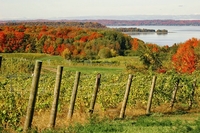
This little-known region may be America’s next great wine destination. Michigan currently ranks sixth in the U.S. in wine grape production. It is home to five American Viticultural Areas (AVAs), two of which have received significant acclaim: the Leelanau and Old Mission Peninsulas. These wine regions around Traverse City are perfect for Riesling, Pinot Grigio, Cabernet Franc, and Gewurztraminer as they thrive in Michigan’s cooler climate that is moderated by "lake effect." There has also been a boom in sparkling wine production in the area. With so many of the wineries near beautiful sandy beaches, lighthouses, and striking sand dunes, it’s no surprise that the region is earning the nickname the "Napa of the Midwest."
To better understand the region’s depth and breadth, I reached out to Brent Kroll, Michigan native, proprietor, and sommelier of one of D.C.’s most beloved wine bars, Maxwell Park. Kroll noted that he’s "been following the incredible work of Sean O’Keefe since he was at Chateau Grand Traverse and now Mari Vineyards." Kroll also highlighted wines from Peninsula Cellars and the Cabernet Franc from Black Star Farms as "must-tries."
Photo: Credit Wandering Educators
–Black Star Farms, 2017 Arcturos Cabernet Franc, $25
